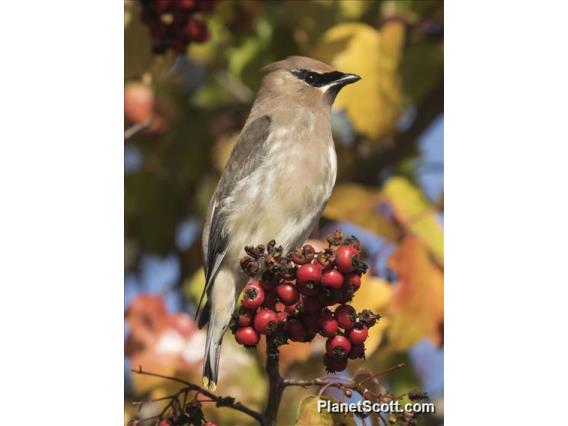Cedar Waxwing (Bombycilla cedrorum)

Cedar Waxwing (Bombycilla cedrorum)

Cedar Waxwing (Bombycilla cedrorum)

Cedar Waxwing (Bombycilla cedrorum)

Cedar Waxwing (Bombycilla cedrorum)




×





Cedar Waxwing (Bombycilla cedrorum)

Cedar Waxwing (Bombycilla cedrorum)

Cedar Waxwing (Bombycilla cedrorum)

Cedar Waxwing (Bombycilla cedrorum)
About Cedar Waxwing (Bombycilla cedrorum)
- Kingdom: Animals
- Phylum: Chordates
- Class: Birds
- Order: Perching Birds
- Family: Waxwings
The cedar waxwing is a member of the family Bombycillidae or waxwing family of passerine birds. It is a medium-sized bird that is mainly brown, gray, and yellow. Some of the wing feathers have red tips, the resemblance of which to sealing wax gives these birds their common name. It is a native of North and Central America, breeding in open wooded areas in southern Canada and wintering in the southern half of the United States, Central America, and the far northwest of South America. Its diet includes cedar cones, fruit, holly berries, and insects. The cedar waxwing is listed as least concern on the IUCN Red List.
Source: Wikipedia
Visits
-
1983-06-06
Elgin, United States of America -
2006-02-24
Bernal Hill, United States of America -
2007-03-04
Bernal Heights - Neighborhood park, United States of America -
2007-03-06
Golden Gate Park - North Lake, United States of America -
2007-06-14
Cape May National Wildlife Refuge - Deleware Bay, United States of America -
2007-07-21
Burnidge Forest Preserve, United States of America -
2010-06-11
Petersburg - Wrangell Narrows, United States of America -
-
2012-07-09
Sax-Zim Bog, United States of America -
-
2013-04-14
Austin, United States of America -
2013-04-19
Bolivar Peninsula, United States of America -
2013-05-06
Mount Davidson, United States of America -
2014-03-09
Los Angeles County Arboretum and Botanic Garden, United States of America -
2014-09-20
East Wash, United States of America -
2014-09-23
Redwood Valley, United States of America -
2014-11-29
Lafayette Park, United States of America -
2015-01-03
Woodward Park, United States of America -
-
-
-
-
-
-
-
2016-11-19
Mission - My New Backyard, United States of America -
-
-
-
-
-
-
-
-
-
-
-
-
-
-
2025-09-18
Charleston Road Marsh, United States of America





